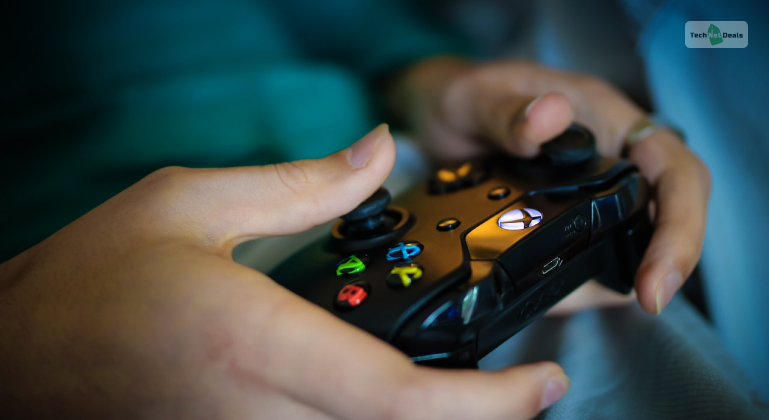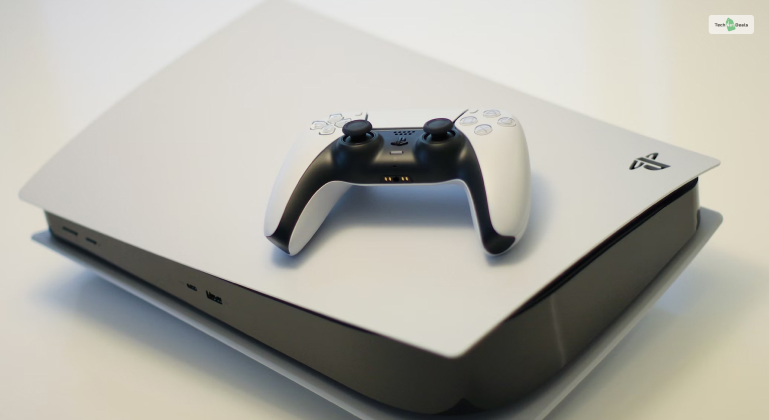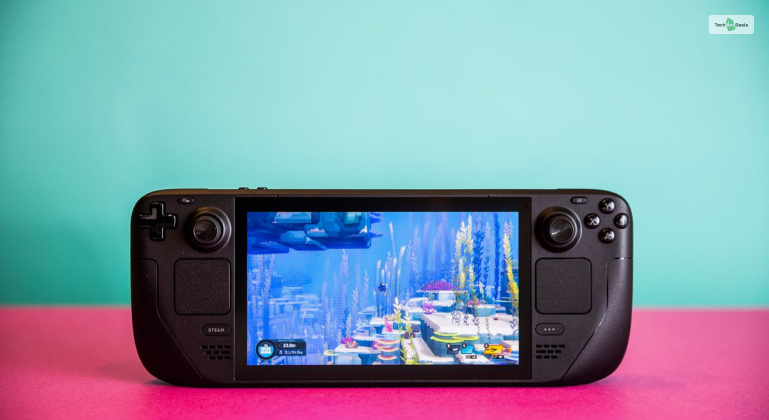
Handheld gaming consoles have come a long way. I still feel nostalgic thinking about my memories of playing Pokemon games on my GameBoy Advance or God of War on the PlayStation Portable. While the Nintendo Switch is still the go-to portable gaming handheld, the Steam Deck presents an excellent alternative to it. Now, we have the Steam Deck OLED – the bigger, better, and brighter Steam Deck.
Now, this upgrade boasts a better screen, along with a better battery life. However, is it worth spending over $500 for this? Let’s find out!
Steam Deck OLED Specifications, Release Date, And Price
The primary specifications of the Steam Deck OLED upgrade are:
| Operating System | SteamOS |
| Display | 7.4” OLED touchscreen (1280 x 800 resolution, 90 Hz refresh rate) |
| Processor | AMD Zen 2 (2.4 GHz – 3.5 GHz) |
| Graphics | AMD RDNA 2 (1 GHz – 1.6 GHz) |
| Memory | 16 GB LPDDR5 RAM (6,400 MT/S) |
| Storage | 512 GB or 1 TB NVMe SSD |
| Audio | Stereo speakers, 1x 3.5 mm jack, Dual Mics |
| Connectivity | Wi-Fi 6e, Bluetooth 5.0 |
| Ports | 1x USB Type C with DisplayPort 1.4 support |
| Battery | 5,313 mAh (50 Whr) |
| Dimensions (H x W x D) | 11.7” x 4.6” x 1.8” (298mm x 117mm x 49mm) |
| Weight | 1.14 lbs (640 g) |
The Steam Deck OLED price is $549 for the 512 GB variant. However, if you want extra storage space, then the 1 TB variant is yours for $649. In addition, you also get a 1 TB Smoky Translucent colorway variant for $679.
Steam Deck OLED: My Experience So Far
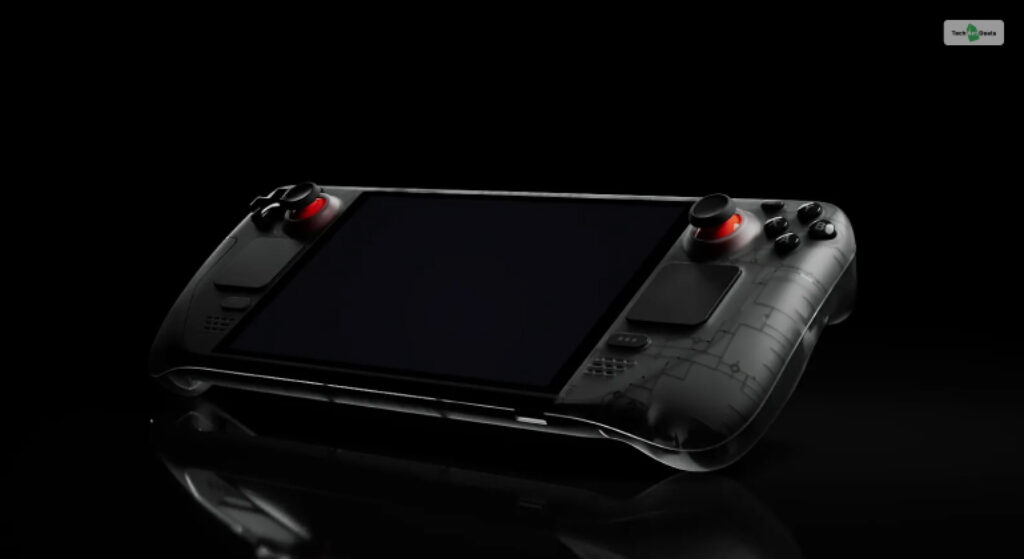
Okay – the launch of an OLED Steam Deck came as a surprise for me. I never expected to get it after two years since the launch of the OG Steam Deck. But – here we are.
Therefore, after my colleague got his hands on the new Steam Deck OLED, I was ecstatic to try it out. In fact, I was so thrilled – that I used it for a week before my colleague could himself!
However, that week was enough for me to determine whether the Steam Deck OLED is a worthy upgrade.
So, does the Steam Deck OLED have enough extra bells and whistles to warrant a new purchase? Let’s find out!
Design: The Same Steam, Just Lighter
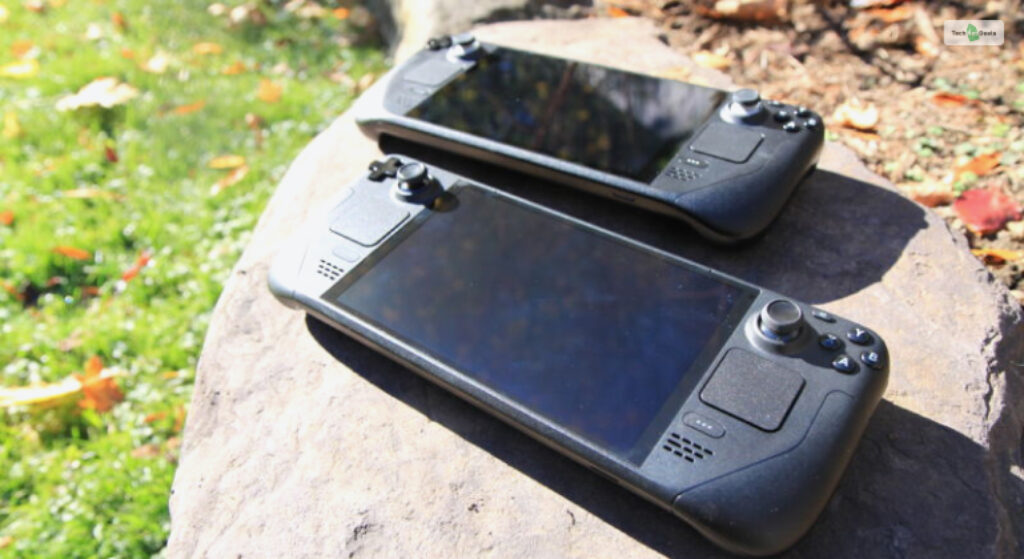
The Steam Deck OLED design has remained the same as the original Steam Deck. The only upgrades you will see are the bigger screen and a different orange power button. Apart from that, it looks like the original – which takes inspiration from the Nintendo Wii U gamepad.
However, I did feel it’s more comfortable to play for longer hours on the Steam Deck OLED. This is because it’s 30 grams lighter than the original one, which I greatly appreciate.
Display: Bigger And Better
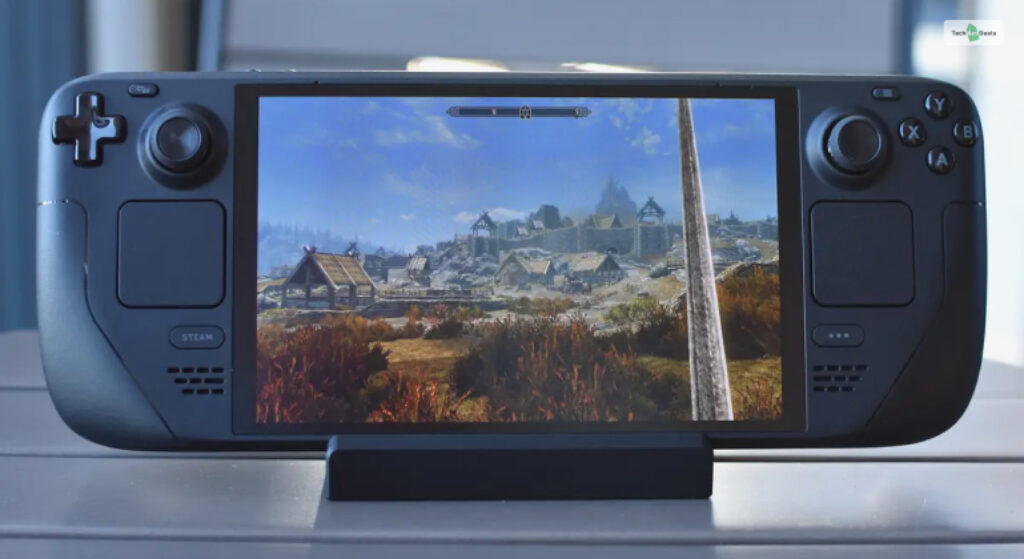
The new Steam Deck OLED display is better than the original in every aspect. Since you now get an OLED display, the visuals are brighter, sharper, and more vivid than before.
In addition, it’s now a quarter of an inch bigger as well. A 7.4” OLED display is the best way to game on the Steam Deck. Plus, we now get a screen with a 90 Hz refresh rate – which is ahead of the 60 Hz refresh rate of the previous. Therefore, the Steam Deck refresh rate is similar to the Google Pixel 7A.
However, my disappointment in its most major namesake improvement comes in the form of its resolution. It’s the same 1280 x 800 resolution as the original one. Unfortunately, smartphones like the Nothing Phone 2 and the iPhone 14 Pro Max have smaller screens with higher resolutions.
Moreover, the main rivals of the Steam Deck OLED – the Asus ROG Ally and the Lenovo Legion Go – have higher resolutions and a 120 Hz refresh rate.
Battery: Significantly Better Than Last Time
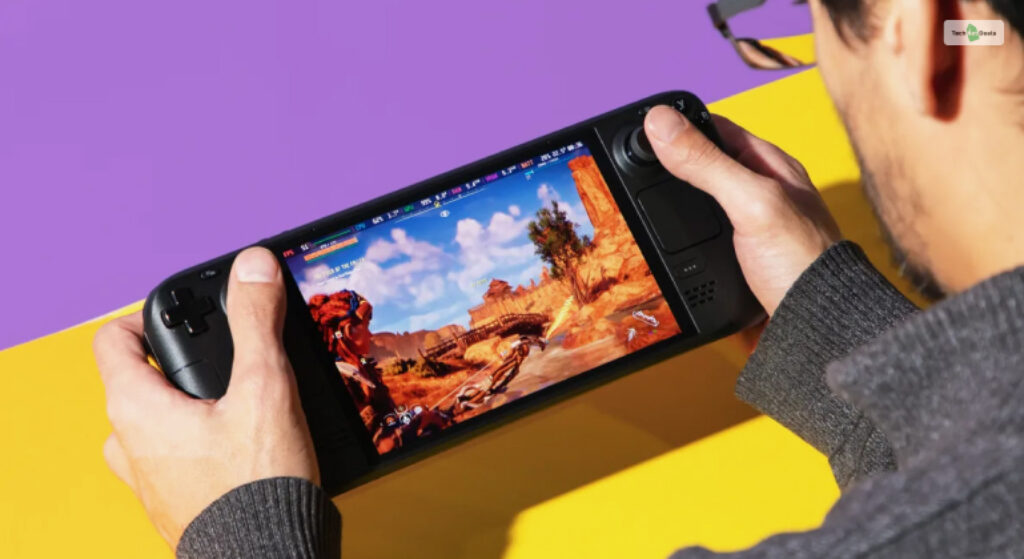
Another significant improvement on the Steam Deck OLED is its battery life. The new Steam Deck OLED has a juicier 5,313 MHz battery power compared to the original’s 5,200 MHz.
While this might seem insignificant on paper, it runs at least an hour more. However, this is in the 90 Hz mode. Therefore, since you can cap it at 60 Hz, expect it to run at least another hour more.
In addition, the 50 WHr battery now charges faster as well, charging up to 100% in an hour. Such a fast charge is essential for a handheld gaming device, and the Steam Deck OLED manages this well.
However, unlike the original, I ran into less heating issues. I played till my battery drained to 10%, and my hands only warmed up slightly.
Performance: An Incremental Increase
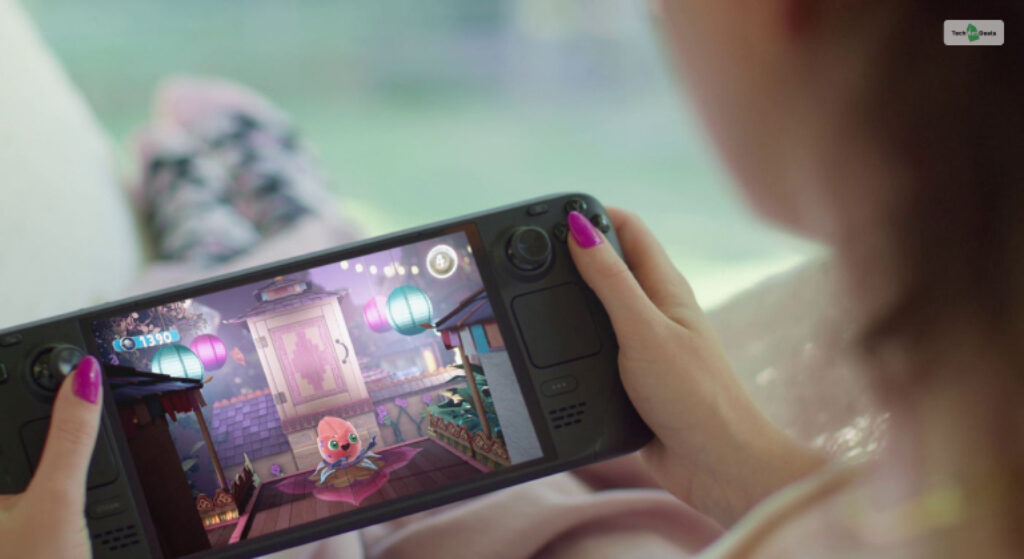
Now, coming to the Steam Deck OLED performance – it is more or less the same as the original. The only difference is that you now get 5 to 10 fps more in some games (at the recommended settings).
Sure, its performance is nowhere close to a gaming console like the Xbox One S or a gaming laptop like the Asus TUF Gaming F15, but it’s still pretty good.
I could play many of my favorite games, like DOOM: Eternal, The Witcher 3, and Metal Gear Solid 5: Phantom Pain, above 60 fps at the highest graphical settings. Moreover, I was surprised that this could handle Skyrim modded out with 30 mods with no performance drop.
However, I struggled to play new games at 60 fps, like Cyberpunk 2077, Read Dead Redemption 2, and Hogwarts Legacy. For these newer AA titles, you can expect around 40 fps on average, the lowest settings with DLSS and FSR.
In addition, Starfield runs at 20 fps at the lowest settings – just like it does on a gaming PC like the Lenovo IdeaPad Gaming 3!
This presents the looming threat of newer AAA titles being unplayable at 60 fps. While I hate to see this coming, it might just be inevitable.
Overall, the Steam Deck OLED performs slightly better than the original. This is due to its better 6,400 MT/s RAM. Therefore, the Steam Deck OLED performance-wise is better than the Asus ROG Ally. However, the Lenovo Legion Go is slightly ahead in performance (and price).
Steam Deck OLED: Deal Or No Deal
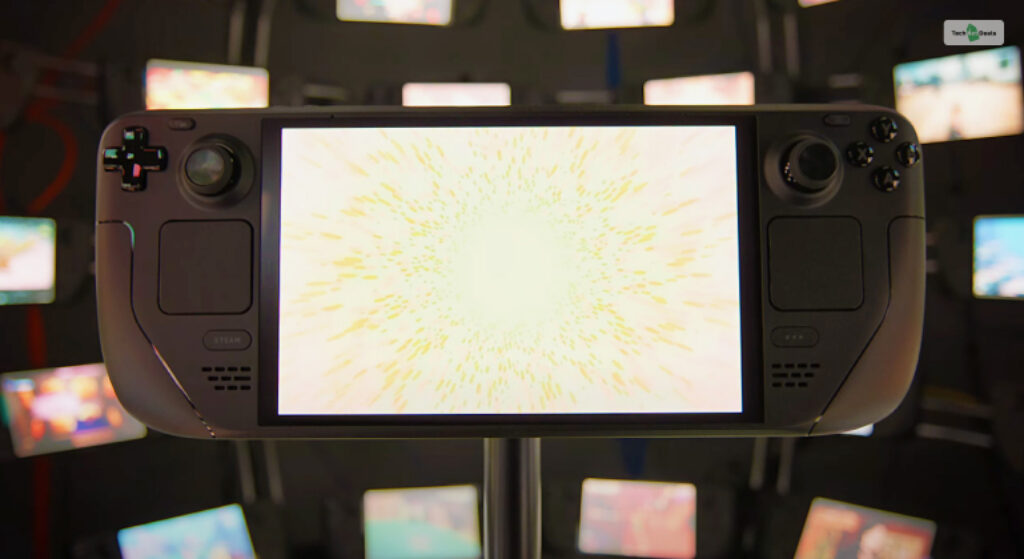
I had fun trying out the Steam Deck OLED, which provides good performance for your price.
The Steam Deck OLED offers incremental upgrades to the original. Therefore, if you own the original Steam Deck, you might wish to pass on this. The only significant upgrades it has are the bigger and better screen, along with beefier battery life.
If you want a handheld gaming console, the Nintendo Switch is your best bet. Or get a PlayStation 5 Go if you own a PS5 Slim. However, this might be your best bet if you want a handled Windows console.
| Pros | Cons |
|---|---|
| • Better performance • Greatly enhanced visuals • Juicier battery life • Lighter on the hands | • Might struggle to play newer AAA games, questioning its longevity performance-wise • Affordable yet competitive price |


